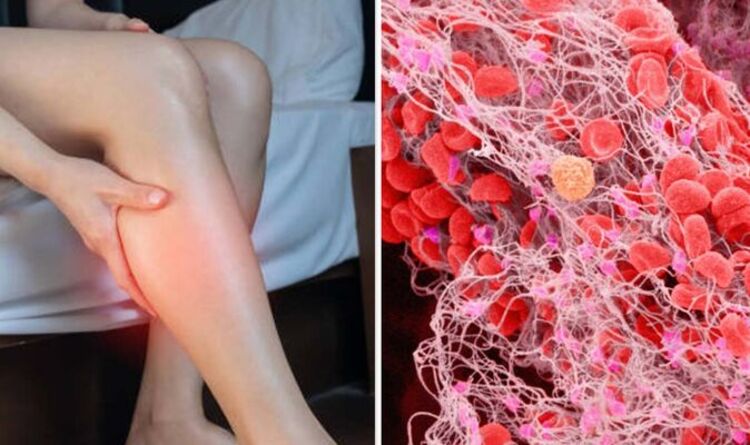British Heart Foundation: Understanding blood clots
We use your sign-up to provide content in ways you’ve consented to and to improve our understanding of you. This may include adverts from us and 3rd parties based on our understanding. You can unsubscribe at any time. More info
There are several signs and symptoms of blood clots. They are important to spot, as blood clots can cause deep vein thrombosis (DVT). This can be dangerous and you will need quick medical attention. Not everyone with a DVT will have symptoms, but a DVT usually forms in one leg or one arm, so that is where symptoms will occur.
Clotting is normal, but clots can be dangerous when they do not dissolve on their own.Once clots form, they can travel to other parts of your body, causing harm.
The Cleveland Clinic says symptoms of a DVT may include swelling of the leg or arm, and “sometimes this happens suddenly”.
The organisation says pain or tenderness in the leg may occur, and sometimes will only happen when standing or walking.
Other signs that occur in the area of the leg or arm are it being swollen, hurting, or being warmer than usual.

The organisation says skin that is red or discoloured is also a sign, as are veins near the skin’s surface, which may be larger than normal.
The NHS says you should get medical help as soon as possible if you think you have DVT.
The health body adds: “DVT can be very serious because blood clots in your veins can break loose, travel through your bloodstream and get stuck in your lungs.
This is called a pulmonary embolism (PE). A PE can be life threatening and needs treatment straight away.
A PE can cause a lack of blood flow that leads to lung tissue damage. It can cause low blood oxygen levels that can damage other organs in the body, too.
The NHS says: “If a doctor thinks you have DVT, you should be referred to hospital within 24 hours for an ultrasound scan. The scan shows whether blood is flowing normally through the vein.“
You may also have an X-ray of the vein (venogram). For this, you will be injected with a dye to show where the blood clot is.”
The Johns Hopkins University says: “Pulmonary embolism (PE) is often difficult to diagnose because the symptoms of PE are a lot like those of many other conditions and diseases.”
It says a PE, particularly a large PE or many clots, can quickly cause serious life-threatening problems and even death.
Treatment of a PE often involves anticoagulation medicines or blood thinners.
Stop the Clot says: “The first and most important thing you can do to protect yourself from a life-threatening blood clot is to learn if you are at risk.”
It says some of the most common risk factors for blood clots are hospitalisation, major surgery, pregnancy, and sitting too long, especially with legs crossed.

Similarly, if you have an inflammatory condition such as Crohn’s disease or rheumatoid arthritis, this can increase your risk of clots.
There are some steps you can take to reduce your risk. For example, the NHS says you should drink plenty of water to avoid dehydration, as you’re more likely to get a clot if you’re dehydrated.
It also says a DVT is more likely to happen if you:
- Are over 60
- Are overweight
- Smoke.
Source: Read Full Article
